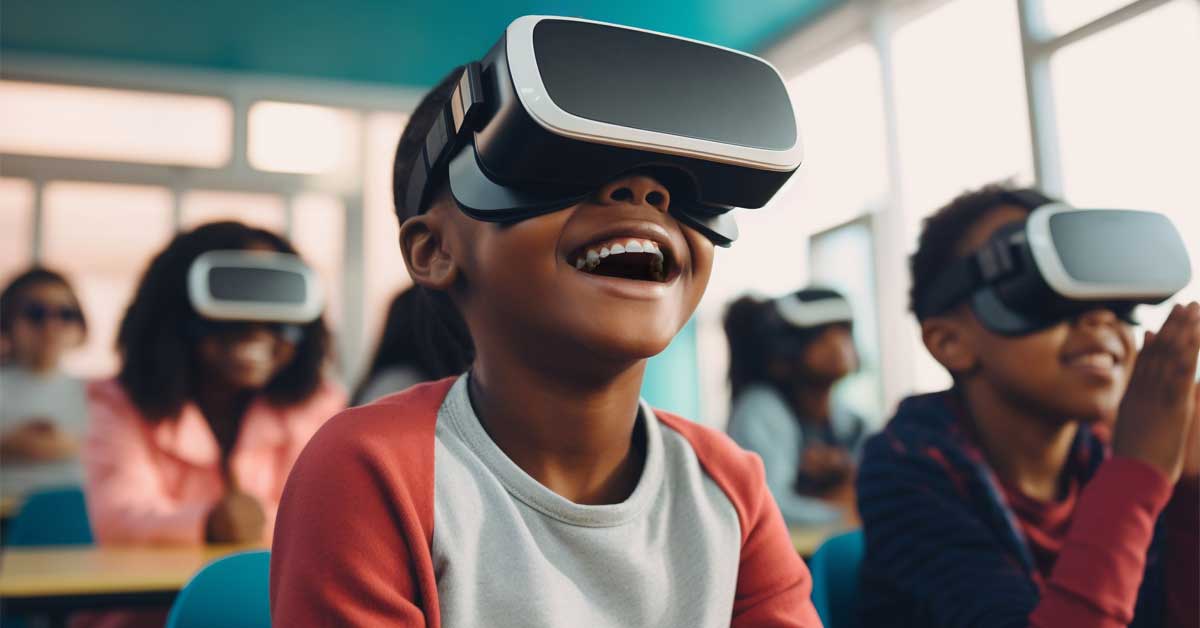In the current landscape of education, technology has emerged as a transformative force, revolutionizing the way we teach and learn. Its integration into educational settings has unleashed a myriad of opportunities, making learning more accessible, engaging, and effective. Let’s explore the multifaceted ways in which technology supports education.
Enhancing Accessibility
One of the primary benefits of technology in education is its ability to break down barriers to learning. Online courses, digital textbooks, and educational apps provide students with access to resources regardless of geographical location or physical limitations. This accessibility democratizes education, reaching remote or disadvantaged communities and catering to diverse learning styles.
Engaging Learning Experiences
Technology injects dynamism into learning, making it more interactive and engaging. Virtual reality (VR), augmented reality (AR), gamification, and multimedia tools offer immersive experiences that captivate students’ attention and foster active participation. Interactive simulations allow for hands-on learning in subjects like science and mathematics, boosting comprehension and retention.
Personalized Learning Paths
Adaptive learning platforms and AI-powered systems analyze students’ learning patterns and abilities, enabling personalized learning paths. These tools cater to individual strengths and weaknesses, providing tailored content and pacing to optimize learning outcomes. This customization nurtures a student-centric approach, addressing diverse needs within a classroom setting.
Collaboration and Communication
Technology facilitates seamless collaboration among students and educators, transcending geographical boundaries. Online discussion forums, video conferencing, and collaborative tools enable peer-to-peer interaction, encouraging the exchange of ideas and fostering a sense of community. Teachers can also provide instant feedback and support, enhancing the learning process.
Access to a Wealth of Resources
The internet acts as an expansive repository of knowledge, and technology grants students access to a vast array of resources. From educational videos and articles to online libraries and research databases, students can delve deeper into subjects, supplementing traditional learning materials. This access fosters curiosity and self-directed learning.
FAQs (Frequently Asked Questions)
How does technology impact traditional teaching methods?
Technology complements traditional teaching methods by offering supplementary resources, enhancing engagement, and allowing for personalized learning experiences. It expands the toolkit available to educators, enabling them to cater to diverse learning styles more effectively.
Are there any risks associated with technology in education?
While technology offers numerous benefits, risks such as over-reliance, potential distraction, and issues related to data privacy and security need to be addressed. It’s crucial to maintain a balance and implement safeguards to mitigate these risks.
Can technology bridge the education gap?
Yes, technology has the potential to bridge the education gap by providing access to quality resources and personalized learning experiences for students in underserved communities. However, ensuring equitable access to technology remains a challenge that needs attention.
Conclusion
Technology continues to evolve and shape the landscape of education, offering limitless possibilities to enrich the learning journey. Embracing these technological advancements while addressing associated challenges will pave the way for a more inclusive, engaging, and effective educational experience.
This page was last edited on 9 January 2024, at 6:03 pm
How can we help you?
























